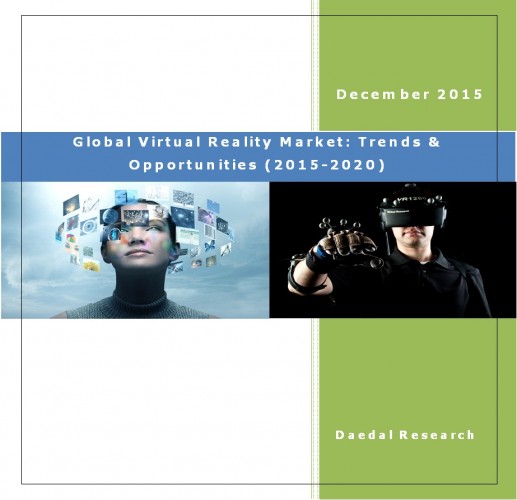

Publish Date:Dec 2015
No. of Pages:61
This report named “Global Virtual Reality Market: Trends & Opportunities (2015-2020)” analyzes the projected growth of virtual reality market in near future. Global total virtual reality market by value, by components, by segments, by users, by geography and by mode has been analyzed in this report. Components of total virtual reality market: hardware and software are separately analyzed in this report. Global virtual reality hardware is analyzed by value, by segments, by volume and by brands. Global virtual reality software is analyzed by value and by segments.
One of the major segments of global total virtual reality market: Global Virtual Reality Gaming Market is also analyzed by value and by segments. North America’s virtual reality gaming market is also analyzed in this report.
Virtual reality companies and investment analysis is also done in this report. Virtual reality companies and investments have been analyzed by number of companies, by company ownership, by funding, by total investors, by top investors and by the category of virtual reality investments. Virtual reality market by patents and by the category of patents is also analyzed in this report.
Virtual reality product analysis has also been done in this report, which includes description of major virtual reality products in the market, virtual reality product comparison, headset brands market share and virtual reality products price comparison.
This report also includes the company profiling of three major companies into virtual reality business: Facebook, Google and HTC. Company profiling includes business overview, financial overview and business strategies of each company.
Company CoverageAlthough, virtual reality had laid down its presence in nineteenth century, it has the greatest scope of development today and in near future. Virtual Reality is a technique which has the ability to place users into a completely different, alternate environment. This alternative environment is computer generated and can be fully immersive or non-immersive.
With the coming up of virtual reality, a simultaneous development of augmented reality can be seen. While similar, there is certainly a difference between the two: Augmented reality enhances the real life with artificial images and adds graphics, while virtual reality replaces the real world with artificial.
Virtual reality platform is mainly divided into two components: Software and Hardware. Software is mainly the content which is displayed through HMDs, which is the hardware component of virtual reality. Virtual reality can be majorly segmented by applications and technology. With the use of technology a stimulated environment is created. Technology is further subdivided into three categories: data processing, display and peripherals. Virtual reality has four major applications, which are in the field of Entertainment, Healthcare, E-Commerce and Training Simulation.
The growth of virtual reality market is driven by increasing smartphone users, increasing worldwide gamers, rising GNI per capita, affordable virtual reality devices and financial support for the Virtual reality companies. But there are some challenges which this industry faces, such as limited technical know-how, VR sickness and limited premium content.
Severity: Warning
Message: mysql_close() expects parameter 1 to be resource, object given
Filename: views/product.php
Line Number: 399